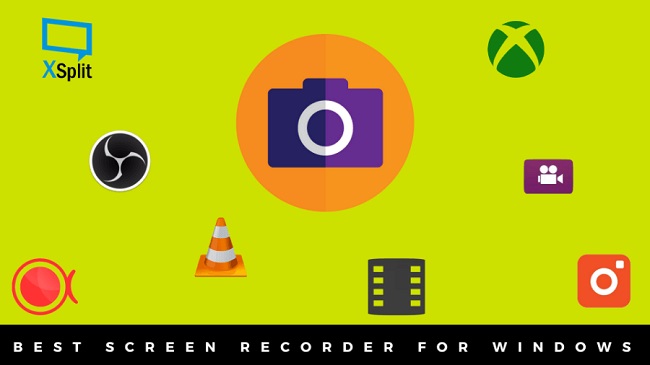Applications that capture the screen, including the cursor’s movements, can be used to demonstrate solutions to problems or demonstrate how to do something, making them ideal for teaching, troubleshooting, or knowledge sharing.
Here Are Top 4 Screen Capture Software
In most cases, you won’t be standing right next to the person or individuals who need to see your screen, so you’ll have to write down lengthy explanations of what’s on it instead. Apps designed to record video are the answer to this predicament.

We tried nearly forty different screen recording programmes before settling on these five.
Read Also:
The Greatest Screen Capture Application for Making And Sharing Recordings in a Flash
1: Loom
Supported Operating Systems: Windows, Mac, Android, iOS, iOS Devices, and Chrome
Use Loom if you need to film anything quickly and send a link to it. Loom’s recording process is straightforward, allowing you to capture either your screen alone, your screen along with webcam video, or just your camera.
After you’re done, your video will be posted on Loom. Alternatively, you can just copy the link to share the movie with others or do some simple editing in the browser. Everything happens quickly, making this the greatest PC screen recorder available.
Free users of Loom can keep 25 movies with a maximum combined length of five minutes. It has its limitations, but it’s perfect for a short demonstration to a friend, foe, or coworker. If you find that you are approaching the 25 video limit, you may always download your videos and save them elsewhere.
Nonetheless, Loom does have several flaws. The PC app performs as expected, but we encountered several limitations and misunderstandings with the mobile apps. For example, it’s strange that Android users can’t just use the native Android support for Google accounts to sign in using their Google credentials.
Apps for the iPhone and iPad don’t support recording video while recording the screen. Even so, Loom will accomplish what most users need without a great deal of hassle. Pricing for Loom is zero dollars for up to 25 films of up to five minutes each. Pricing for businesses begins at $12.50 a month per user, with unlimited storage space.
2: Camtasia
Operating Systems: Windows, Mac
The video capturing interface in Camtasia is simple and to the point. When ready, select the area you want to record, check the boxes next to Webcam and Microphone, then press the Record button. The in-app video editor is another matter entirely. The extensive list of available editing tools is manageable.
Selecting an element in the timeline will bring up its specific attributes and modification options on the right-hand side of the programme. Click-and-drag effects and a respectable library of stock media can be found along the left side of the app.
If you’re having trouble with Camtasia’s editing capabilities, check out the excellent tutorial videos that the programme offers. In a couple of seconds, we were able to create polished opening and closing sequences and include them into our test video.
The only problem we had was with the interactive elements, like quizzes and buttons, that could be added to the presentation. After adding interactivity, previewing the movie and exporting the final output became substantially more involved, although configuration was straightforward.
The closed captions tool in this app is the only one we tried that looped the audio in the background while you typed. After typing for four seconds, you can hit Tab to skip to the next segment. An unlimited commercial licence for Camtasia costs $299.99.
3: Studio OBS
OS X, OS X, and Linux
If you’ve ever seen a gamer on Twitch, for example, chances are they were using OBS, a screen record programme designed specifically for live streaming. But, it can also be used to record videos, and as it is the most powerful tool for doing so, it is an excellent choice among alternatives to Camtasia.
The vast majority of these programmes allow you to record screen and camera activity. OBS Studio is capable of so much more than that. As a comprehensive broadcasting tool, it supports as many monitors and cameras as your PC can manage.
Also, you can set up different “studios,” or pre-recording audio and video setups, and switch between them as needed. During the test (depicted above), we set up three separate studios, one for the major display and webcam, one for the secondary display and webcam, and one for both.
Each studio’s elements may be resized and repositioned with a click and a drag, and switching between them during a recording session is as easy as pressing a hotkey. Assuming you’ve done your homework, you can use these audio and video presets plus OBS’s powerful integrations to broadcast live video without touching a single option.
About eighty services are available to stream live, from well-known sites like Facebook and YouTube to less well-known ones like Pandora TV. To activate the Start Streaming button with a single click, open the Settings menu and paste your stream key into the text field. Studio adjustments, such as those made to the audio or the positioning of the webcam, are transmitted in real time, so be prepared.
It costs nothing to use OBS Studio.
4: Movavi Video Capture
Microsoft Windows, Apple Macintosh
When looking for a good middle-of-the-road PC screen recorder, go no further than Movavi Screen Recorder. Yet, it excels at one particular use case: scheduled captures.
If you need to record a webinar or live broadcast but aren’t near your computer, this is the option for you. To access this function, go to the Settings panel and look for Scheduler there. You can limit the length of the next recording, or set a start and stop time for an existing recording. After the recording is done, you can even have your computer turn off or go to sleep.
The above-average resolution settings in Movavi just add to the experience, making it quick and clear. You’ll want your recording of that inconveniently scheduled webinar to look professional if you plan on sharing it with anyone.
The price of a lifetime licence for one computer from Movavi is $57.95. Although there is a free version, it is severely limited in its usefulness due to the inclusion of a huge, ugly watermark in the middle of every video.
Details About the Screen Capture Software:
Understanding Screen Capture Software
Screen capture software is a program that allows you to take a snapshot or record your computer screen. These captures can be images or videos that include everything displayed on the screen at a particular time.
The software ranges from basic systems with simple capturing features to advanced programs offering a suite of editing and annotation tools.
Evolution of Screen Capture Software
Initially, screen capturing was limited to basic print screen functions. However, advancements in technology have led to the development of sophisticated software that can capture video, audio, and interactive media, providing more dynamic and comprehensive capturing capabilities.
Key Features of Screen Capture Software
1. Image and Video Capture
Allows for capturing still images or recording videos of the screen, including the ability to select specific capture areas.
2. Audio Recording
Enables the inclusion of audio through a microphone or system audio, essential for creating tutorials or presentations.
3. Editing and Annotation Tools
Offers a range of editing options such as cropping, resizing, adding text, and annotations to enhance the captured content.
4. Direct Sharing Options
Provides functionalities to share captured content directly through various platforms like social media, email, or cloud storage.
5. Advanced Recording Features
Some software includes features like webcam recording, scheduled recordings, and GIF creation for more dynamic content production.
Benefits of Using Screen Capture Software
1. Enhanced Communication
Screen captures can enhance how we communicate complex information, making explanations clearer and more visual.
2. Educational and Training Purposes
Educators and trainers extensively use screen capture software for creating tutorials, lessons, and instructional materials.
3. Streamlining Workflows
Professionals use screen captures to document processes, report bugs, or share information quickly within teams.
4. Content Creation
For content creators, screen capture software is indispensable for creating videos, tutorials, and other digital content.
Types of Screen Capture Software
1. Basic Screen Capture Tools
These are often free and provide fundamental capturing functionalities like taking screenshots and basic video recording.
2. Professional Screen Capture Software
Geared towards professionals who need advanced features such as high-quality video capture, extensive editing tools, and integration capabilities.
3. Game Recording Software
Specially designed for gamers, these tools capture high-resolution video and audio without affecting game performance.
Choosing the Right Screen Capture Software
1. Determine Your Needs
Assess your primary purpose for using the software to determine the required features, such as image editing, video recording quality, or direct sharing options.
2. Ease of Use
Select software with an intuitive interface to ensure efficiency and ease of use, especially if you plan to use it frequently.
3. Compatibility
Ensure the software is compatible with your operating system and hardware specifications.
4. Quality and Performance
Consider the quality of the output and the software’s performance, particularly if you need high-resolution videos.
5. Pricing
Evaluate whether free software meets your needs or if investing in a paid version with advanced features is worthwhile.
6. Customer Support and Updates
Consider the level of customer support provided and how frequently the software is updated with new features and bug fixes.
Implementing Screen Capture Software
1. Installation and Setup
Install the software and customize the settings according to your preferences and requirements.
2. Learning and Experimentation
Spend time learning the features and experiment with different functions to maximize the software’s potential.
3. Integration
Integrate the software with other tools and platforms you use for seamless workflow and productivity.
Read Also:
Conclusion
Screen capture software is a versatile and powerful tool that has become integral in various fields, from education to content creation. Understanding its features, benefits, and the types available is crucial in selecting the right software to meet your specific needs.
Whether for professional or personal use, screen capture software can significantly enhance your ability to communicate, document, and create digital content effectively. As technology continues to evolve, so too will the capabilities of screen capture software, making it an essential component in our digital toolkit.


